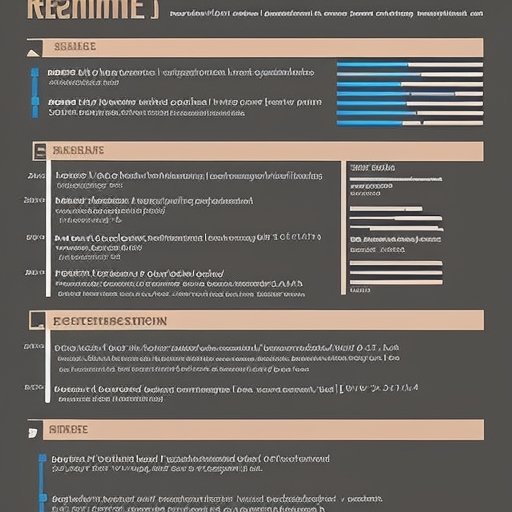How to motivate teams - Leading by motivating
How to motivate teams
Motivation drives people to take action. Without proper motivational leadership, things simply would not get done. As a leader, your capacity for motivating plays a key element in the success of your team and your organization.
What Motivation Is Not
Some people willingly pour themselves and all their energy into a project, while others do the bare minimum and go home early. Why? Motivation. Motivation boosts initiative, productivity, and creativity. A lack of it dampens enthusiasm, blunts innovation, and stunts the desire to excel. As a leader, your ability to motivate others can make or break a project, initiative, team, or even the whole organization. Whatever the motivational need, an individualized approach is essential, as not everyone on your team has the same motivations.
Everyone’s different. Some respond best to public accolades, while others prefer a quiet handshake and a simple “good job” from the boss. Some find validation through work and professional achievement, while others see work as merely the means of providing an income to support a fulfilling home life. Motivators change as lives change. Consider money as a motivator. Everyone needs to pay bills. Just about everybody needs a regular paycheck. But once people have achieved a stable, satisfactory standard of living, money is often no longer a driving motivator. Other needs become more motivating.
It’s true that fear of penalties or negative consequences can sometimes achieve short term compliance, but long term, fear breeds resentment, pushback, and disrespect. Coping with a fearful situation will become the driving motivator, a demotivator. People will expend a great deal of time and effort to avoid or work around penalties they find unreasonable. Either way, being fearful of the job means that one is not focusing positively on achieving either personal or organizational goals.
As a leader, part of your job is to turn the situation around, from a fearful environment to an inspiring one. Be that inspiration for your team. Lead by example and model the behaviors you want to instill in others. Live the lessons that you want others to learn. Your staff will respect your ideas when you’re consistent and follow through with what you say. Don’t fall prey to common motivational misconceptions. Not everyone responds to the same motivators. Money is not everyone’s prime motivation. Authority alone is not motivating, and neither is fear.
Fostering Intrinsic Motivation
A canny leader works to provide organizational mechanisms for their people to share ideas about productivity improvements, support collaboration, and cross-pollination between teams. These leaders let communication flow back to the individual, sharing the details of organizational performance that can motivate individuals. And most of all, they freely share any and all news of success.
Everyone needs to know their work is valued. Positive motivators like praise and rewards bolster a team's confidence and self-esteem. It instills an intrinsic pride in their work. They reward them with increased decision-making autonomy and independence with their work, letting them take ownership of what they do. They will be more engaged and demonstrate more sustained commitment.
Inspiring a Team
Inspire, from Latin, literally means to breathe in air. Inspiration is the fresh air that allows your team to excel and achieve.
Appreciative involvement with the team is a foundation for motivating people. When you value each individual for their unique contributions and talents, it lets them know that they belong; that their work is important to meeting the goals. Along with valuing talent, these leaders make positive connections with their staff. They look for and leverage things they have in common.
Sharing a sense of humor creates a positive atmosphere where the motivation for the work can come naturally. Sharing who you are, and letting your people be themselves fosters open, accepting communication in the group and encourages teammates to make connections among themselves.
The simplest and sometimes most influential validation is on the spot praise: a quick positive word or even an approving smile. And when the work or behavior is not stellar, leaders must look for a way to turn it around. Give constructive feedback, not criticism. Show how to do it better, and always end with a positive comment. This even gives underperformers something positive to build on. Leaders should recognize everyone’s contributions individually, in the manner most appropriate to them, as individuals.
Motivating Individuals
When its tires aren't properly aligned, a car doesn’t perform well. There are frictions and parts get worn out. It's the same with your organization. When people aren't working toward the same goals, you don't get anywhere. When considering how to motivate the individuals who make up your team, it’s important for leaders to think about how to get them coordinated and working together toward a common goal. It all begins with setting the right goals.
They can be challenging, but they must be realistic, attainable. When the goals you set for your team align with the company’s and make sense, you will have a much easier time getting your people to buy-in. Take the time to discover your team members’ individual motivations. Talk with them, listen, and learn. Let them speak frankly and openly. Learn their working styles and the things they enjoy doing. Learn their aptitudes and how they feel about their work. Then, assess their individual motivators.
The idea is to get your teams intrinsic motivators involved. Communicate with your people on their terms, in language they’ll relate and respond to. And then let them know how they matter. Show them the benefits, personal and professional, of their work and how that work is good for the organization. Explain to your people, in individual terms, where their work and their efforts are important to making the company successful, and that it will translate into recognition and reward.
Use your influencing skills to get team members coordinated with each other and aligned with their goals. A well-oiled machine requires everyone to pull together and doing their parts. As disparate and individual as each part maybe, one cannot succeed without the others. The leader’s job is to address each of those parts individually, engage each individual's personal motivations, align their goals, and point them in the right direction.
From the blog
View allOther popular blogs
Follow these links to help you prepare for the ACCA exams
Follow these blogs to stay updated on IFRS
Use these formats for day to day operations
- Account closure format
- Insurance claim letter format
- Transfer certification application format
- Resignation acceptance letter format
- School leaving certificate format
- Letter of experience insurance
- Insurance cancellation letter format
- format for Thank you email after an interview
- application for teaching job
- ACCA PER examples
- Leave application for office
- Marketing manager cover letter
- Nursing job cover letter
- Leave letter to class teacher
- leave letter in hindi for fever
- Leave letter for stomach pain
- Leave application in hindi
- Relieving letter format
Link for blogs for various interview questions with answers
- Strategic interview questions
- Accounts payable interview questions
- IFRS interview questions
- CA Articleship interview questions
- AML and KYC interview questions
- Accounts receivable interview questions
- GST interview questions
- ESG Interview questions
- IFRS 17 interview questions
- Concentric Advisors interview questions
- Questions to ask at the end of an interview
- Business Analyst interview questions
- Interview outfits for women
- Why should we hire you question
Popular blogs
Leave application format
Crafting the perfect leave application for any scenario, from personal emergencies to medical leaves, often presents a challenge. To simplify this task, we've assembled an extensive index of leave application formats designed for various circumstances. Our collection is aimed at enhancing the clarity and professionalism of your leave requests. Dive into our index to discover the template that aligns with your specific needs, facilitating a smoother leave application journey.
List of Leave application formats
- Leave application for office
- Leave application for school
- Leave application for sick leave
- Leave application for marriage
- leave application for personal reasons
- Maternity leave application
- Leave application for sister marriage
- Casual leave application
- Leave application for 2 days
- Leave application for urgent work
- Application for sick leave to school
- One day leave application
- Half day leave application
- Leave application for fever
- Privilege leave
- Leave letter to school due to stomach pain
- How to write leave letter











Leave a comment